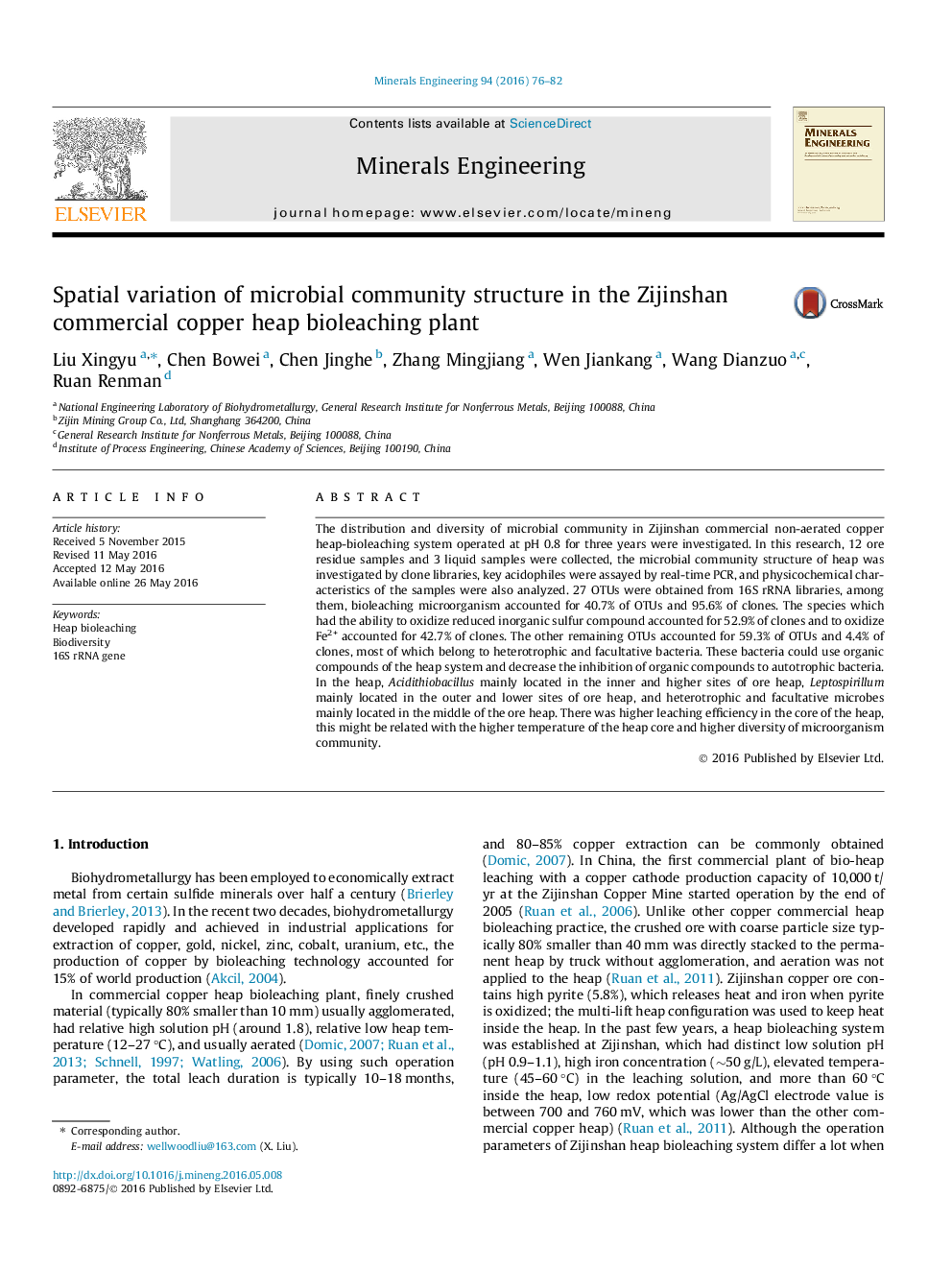| Article ID | Journal | Published Year | Pages | File Type |
|---|---|---|---|---|
| 232734 | Minerals Engineering | 2016 | 7 Pages |
•Research focused on the bacterial community structure of a commercial heap bioleach plant.•Acidithiobacillus and Leptospirillum had different spatial distribution in the heap.•Microbial community structure is correlated with the residues’ chemical composition.
The distribution and diversity of microbial community in Zijinshan commercial non-aerated copper heap-bioleaching system operated at pH 0.8 for three years were investigated. In this research, 12 ore residue samples and 3 liquid samples were collected, the microbial community structure of heap was investigated by clone libraries, key acidophiles were assayed by real-time PCR, and physicochemical characteristics of the samples were also analyzed. 27 OTUs were obtained from 16S rRNA libraries, among them, bioleaching microorganism accounted for 40.7% of OTUs and 95.6% of clones. The species which had the ability to oxidize reduced inorganic sulfur compound accounted for 52.9% of clones and to oxidize Fe2+ accounted for 42.7% of clones. The other remaining OTUs accounted for 59.3% of OTUs and 4.4% of clones, most of which belong to heterotrophic and facultative bacteria. These bacteria could use organic compounds of the heap system and decrease the inhibition of organic compounds to autotrophic bacteria. In the heap, Acidithiobacillus mainly located in the inner and higher sites of ore heap, Leptospirillum mainly located in the outer and lower sites of ore heap, and heterotrophic and facultative microbes mainly located in the middle of the ore heap. There was higher leaching efficiency in the core of the heap, this might be related with the higher temperature of the heap core and higher diversity of microorganism community.
